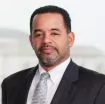Facilities that may be newly eligible for the 340B drug discount program should evaluate their current operations to determine if any action should be taken to address these new opportunities. Pharma companies should evaluate the potential impact of the expansion on their revenues and their systems for handling 340B customer purchases.
The 340B drug discount program allows certain hospitals and federal-grant-funded clinics, referred to as "covered entities," to purchase covered outpatient drugs at prices substantially lower than available to other facilities. This is sometimes referred to as the 340B price. The Patient Protection and Affordable Care Act (PPACA) expanded the types of hospitals eligible to participate in the program and instituted new programs for ensuring that both pharmaceutical manufacturers and covered entities comply with 340B program requirements. One thing that the legislation did not do, as some expected, was to expand the 340B program to cover inpatient drugs.
340B Changes in Health Reform Legislation
The 340B program is generally open to nonprofit hospitals (both government-owned and private) that meet certain requirements, including having a certain "disproportionate share adjustment percentage" or "DSH percentage." Because DSH payment adjustments are available only to hospitals paid under the Medicare Prospective Payment System (PPS), hospitals excluded from the PPS, such as children's hospitals, cancer hospitals and Critical Access Hospitals (CAHs) have been unable to participate in the 340B program. The PPACA removes these barriers to participation. Under the legislation, PPS-excluded children's hospitals and cancer hospitals will be able to participate if they would meet the DSH payment adjustment percentage of greater than 11.75 percent if they were otherwise a PPS hospital. CAHs are eligible to participate by virtue of having CAH status and meeting other program requirements. The DSH percentage criterion is not applicable to CAHs. Rural Referral Centers (RRCs) or Sole Community Hospitals (SCHs) may participate by meeting certain requirements. The legislation lowers the DSH payment adjustment percentage for RRCs and SCHs from 11.75 percent to 8 percent. Based on the number of these newly eligible facilities, as many as 1,500 hospitals could be added to the list of 340B covered entities.
Another important development of the PPACA is that orphan drugs being supplied to newly-eligible facilities are not considered covered outpatient drugs and are therefore not eligible for 340B discount pricing. PPACA refers to drugs designated as orphan drugs under the Federal Food, Drug and Cosmetic Act. Because orphan drugs may have both orphan and non-orphan indications for use, pharmaceutical companies marketing such drugs should monitor how HRSA interprets this provision to assure that they are not offering 340B pricing beyond what is required under the expanded program.
The PPACA makes the new types of facilities eligible to participate in 340B as of January 1, 2010, but these facilities will not be able to enroll in the program until the Office of Pharmacy Affairs (OPA) has developed new guidance that explains the conditions under which these facilities may participate and revises current enrollment materials to reflect the new types of covered entities. At this time, it is unclear if OPA will provide for retroactive discounts to dates prior to official approval of a facility for the program. Because the effective date language in the PPACA is similar to the effective date language in the provision of the Deficit Reduction Act (DRA) that expanded eligibility to certain children's hospitals retroactive to the effective date of the DRA, it is possible that OPA will follow a similar process if it decides to grant retroactive eligibility to those facilities now eligible under the PPACA. In implementing the DRA, OPA permitted facilities to be eligible for retroactive rebates as of the earliest date following the effective date of the DRA that the facility met all 340B program eligibility requirements. Therefore, newly eligible facilities that would like to position themselves to take advantage of potential retroactive eligibility should take steps to meet the following requirements:
Private nonprofit facilities must have a contract with a state or local government to provide health care services to low-income, uninsured individuals, or otherwise demonstrate that they are required to serve this population.
- Private nonprofit facilities must have a contract with a state or local government to provide health care services to low-income, uninsured individuals, or otherwise demonstrate that they are required to serve this population.
- Children's hospitals and cancer hospitals that obtain covered outpatient drugs through a group purchasing organization (GPO) are not eligible for participation in the expanded 340B program. If such facilities currently obtain covered outpatient drugs through a GPO and would like to participate in the 340B program, they must discontinue their outpatient drug participation and will likely not be eligible for retroactive rebates, should such rebates be available, until the date on which the facility ceases participation in the GPO for covered outpatient drugs. Importantly, RRCs, SCHs and CAHs may continue to purchase outpatient drugs through GPOs and still be eligible to participate in the 340B program.
- Facilities should maintain documentation to demonstrate that Medicaid rebates were not generated for covered outpatient drugs for which the facility intends to seek retroactive discounts.
- Facilities should obtain Medicare provider-based status for all outpatient clinics that the facility wishes to have access to 340B discounts.
- Facilities should verify, if applicable, that they have a DSH percentage that meets or exceeds the required threshold for the facility type. DSH percentages are calculated on a quarterly basis. Click here for a list of DSH percentages for the most recent quarter. Facilities that believe their DSH percentage is incorrect should contact their Medicare administrative contractor for assistance.
In addition to expanding the number of potential covered entities, the health reform legislation also introduces new methods for monitoring and enforcing compliance with 340B program rules. The 340B program requires pharmaceutical manufacturers to adhere to a ceiling price in sales of their drugs to covered entities. To address concerns related to pharmaceutical manufacturer "overcharges and other violations of the discounted pricing requirements," the Secretary of Health and Human Services (HHS) is directed to establish a new system to compare the ceiling prices with actual pricing data submitted by manufacturers, perform spot-checks of sales transactions by covered entities and take corrective action to address any identified pricing discrepancies. The Secretary is also tasked with establishing procedures for the refund of overcharges, including overcharges resulting from discounts or rebates issued by manufactures after the sale of drugs to the covered entity that have the effect of lowering the ceiling price. The health reform provisions also require the Secretary to issue guidance on appropriate calculation of ceiling prices and make ceiling price information available to covered entities via the HHS website. There will also be new penalties for violations of 340B requirements in the form of civil monetary penalties not to exceed $5,000 per instance of knowing and intentional overcharging.
At the same time, PPACA adds certain program integrity protections for manufacturers. Covered entities will be subject to increased scrutiny of their behavior "to prevent diversion and violations of the duplicate [Medicaid] discount provision and other requirements." The Secretary is required to develop systems for verifying the accuracy of information submitted by covered entities and identifying each covered entity for purposes of facilitating the ordering, purchasing and delivery of 340B drugs. This results in increased government price reporting accountability for manufacturers. Manufacturers must assess whether their government price reporting systems are sufficiently robust to mitigate their potential False Claims Act risk in this area.
In addition, the Secretary must issue guidance on methods for billing 340B drugs to state Medicaid programs in a manner that will avoid duplicate discounts. The health reform legislation also imposes new penalties on covered entities for knowing and intentional resale of 340B drugs to individuals who are not patients of the covered entity. These penalties include payment of interest on amounts refunded to the manufacturer, disqualification and prohibition on re-entry to the program, and referral of the violation to appropriate federal authorities for action under other applicable federal statutes. To address concerns of both manufacturers and covered entities, the Secretary will be establishing an administrative dispute resolution process to address claims of overcharges brought by covered entities and claims of duplicate discounts or diversion brought by manufacturers.
In light of these recent developments, those facilities that may be newly eligible for the 340B program should evaluate their current operations to determine if any action should be taken to address these new opportunities. Children's hospitals, CAHs, SCHs and RRCs should review 340B program guidance and other materials to determine if participation in 340B would be beneficial for their organization. Click here for 340B program materials. In addition, covered entities and pharmaceutical manufacturers should be aware of the likelihood of increased compliance monitoring and enforcement, and review internal policies and procedures to reduce the possibility of unexpected enforcement actions.
The content of this article is intended to provide a general guide to the subject matter. Specialist advice should be sought about your specific circumstances.





